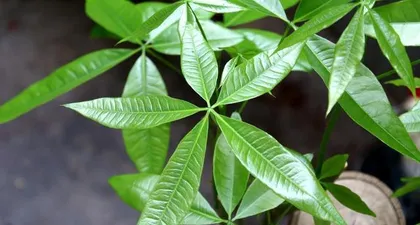Hibiscus syriacus is a beautiful deciduous shrub. It has a long flowering period and a rich variety of flower colors, making it a favorite among flower enthusiasts. However, regarding its growing conditions, different people have different opinions. Some believe it loves sunlight, while others think it prefers shade. So, does Hibiscus syriacus prefer sun or shade? This article will provide detailed answers for you.

Light Conditions
Hibiscus syriacus prefers a well-lit and well-ventilated environment, but direct sunlight can easily scorch its leaves. Therefore, it is suitable for growing in a semi-shaded environment. For Hibiscus syriacus growing in the sun, we need to strengthen daily maintenance management, keep the soil moist, and pay attention to sun protection.
Soil Conditions
Hibiscus syriacus is tolerant of poor soil and is suitable for growing in well-drained, fertile, acidic, or neutral soil. When cultivating Hibiscus syriacus, you can choose a mixed soil of leaf mold, peat soil, and garden soil as the substrate to increase its growth rate.

Temperature Conditions
Hibiscus syriacus is a southern plant and is well-adapted to warm, humid climates. During high summer temperatures, we need to provide appropriate shade for the Hibiscus syriacus and keep the soil moist. When the temperature is low in winter, we need to take good care of the Hibiscus syriacus to prevent the leaves from freezing.
Watering Conditions
Hibiscus syriacus likes a humid environment, but overwatering can easily lead to root rot. In daily care, we need to pay attention to controlling the amount and frequency of watering and keep the soil moderately moist.
Fertilizer Conditions
During its growth period, Hibiscus syriacus needs appropriate nutritional support, but excessive fertilization can lead to excessive growth and affect its flowering period. We can apply organic fertilizer and compound fertilizer in spring and autumn respectively to maintain its normal growth rate.

Pest and Disease Control
Hibiscus syriacus is susceptible to pests and diseases such as aphids and powdery mildew. In daily care, we need to regularly check the leaves and branches of the Hibiscus syriacus, and take corresponding preventive and control measures in time if any abnormalities are found.
Pruning Techniques
Hibiscus syriacus grows relatively fast, so it needs to be pruned in a timely manner to maintain its beautiful shape. When pruning, we need to pay attention to maintaining the balance of the branches and avoid excessive pruning to avoid affecting its flowering period.
Propagation Methods
The propagation methods of Hibiscus syriacus are diverse, such as sowing, cuttings, and division. When propagating, we need to pay attention to selecting the appropriate propagation method and providing it with a suitable growth environment to ensure the success rate of propagation.
Balcony Planting Tips
When planting Hibiscus syriacus on a balcony, we need to choose appropriate pots and soil, maintain a suitable humidity and ventilation environment, and strengthen sun protection measures in summer.
Indoor Planting Tips
Hibiscus syriacus can also be grown indoors, but it is necessary to maintain a well-ventilated, well-lit, and moderately humid indoor environment, and water and fertilize it regularly.
Cultivation Techniques
When cultivating Hibiscus syriacus, we need to pay attention to selecting a suitable location and soil, and strengthen management to maintain a suitable humidity, temperature, and light environment to promote its growth.
Harvesting and Utilization
Hibiscus syriacus has a long flowering period and a rich variety of flower colors, which can be used for various purposes such as ornamental displays, decorations, and drying. When harvesting and utilizing, we need to pay attention to selecting the appropriate flowering period and methods, and maintain the integrity and beauty of the flowers.
Regional Distribution
Hibiscus syriacus is distributed in southern China and Southeast Asia regions. It has high ornamental and economic value and is widely used in daily life.
Cultural Connotation
In traditional Chinese culture, Hibiscus syriacus has rich symbolic meanings, such as nobility, elegance, and celebration, making it an important element in culture and art.
In summary, Hibiscus syriacus likes sunlight but is also tolerant of shade. However, it needs the support of suitable conditions such as light, temperature, and moisture during its growth process. When cultivating Hibiscus syriacus, we need to understand its growing conditions and care techniques, do a good job of daily management, and promote its growth and flowering.